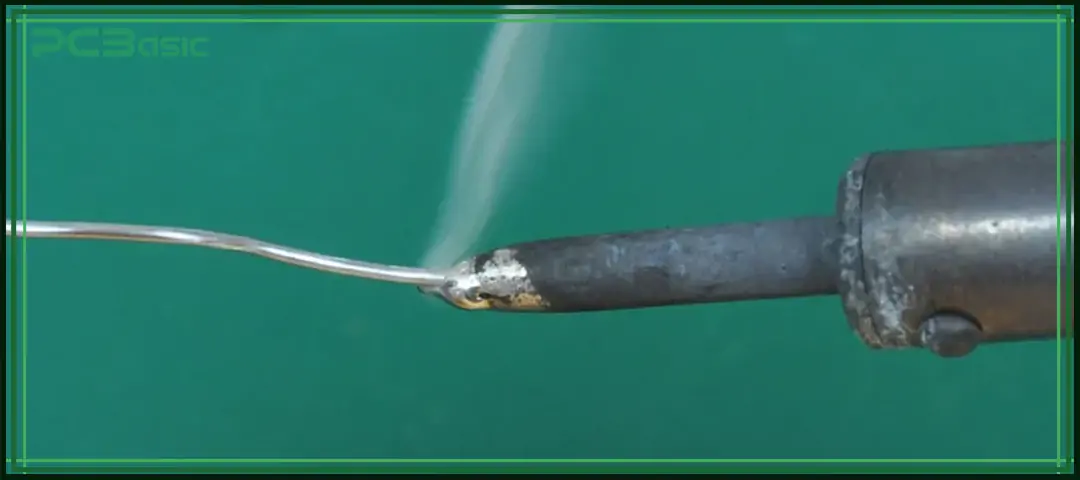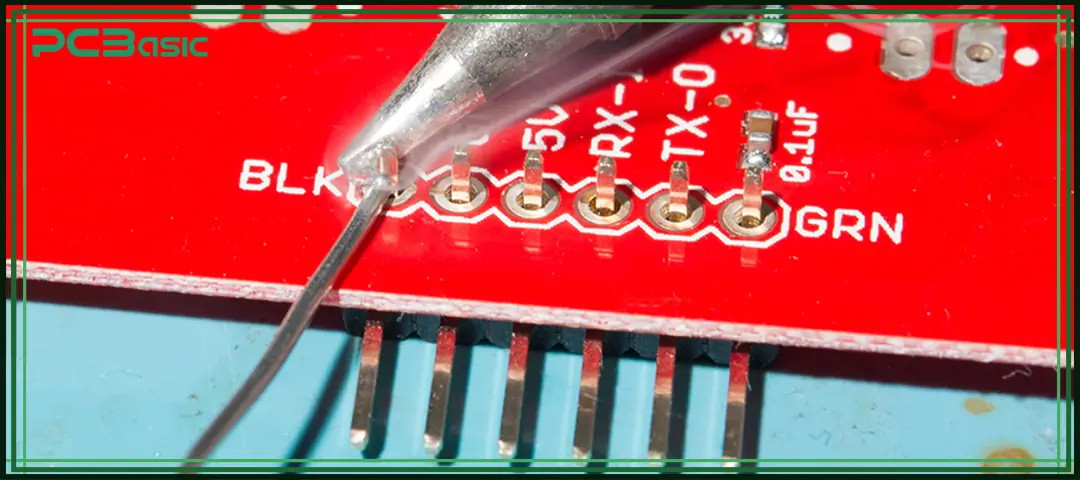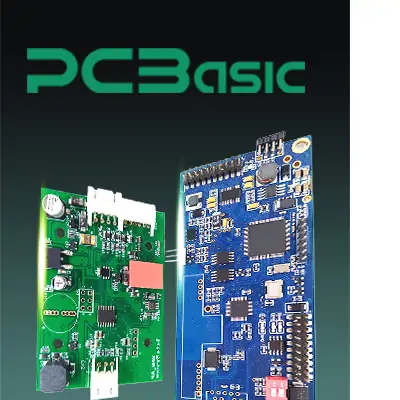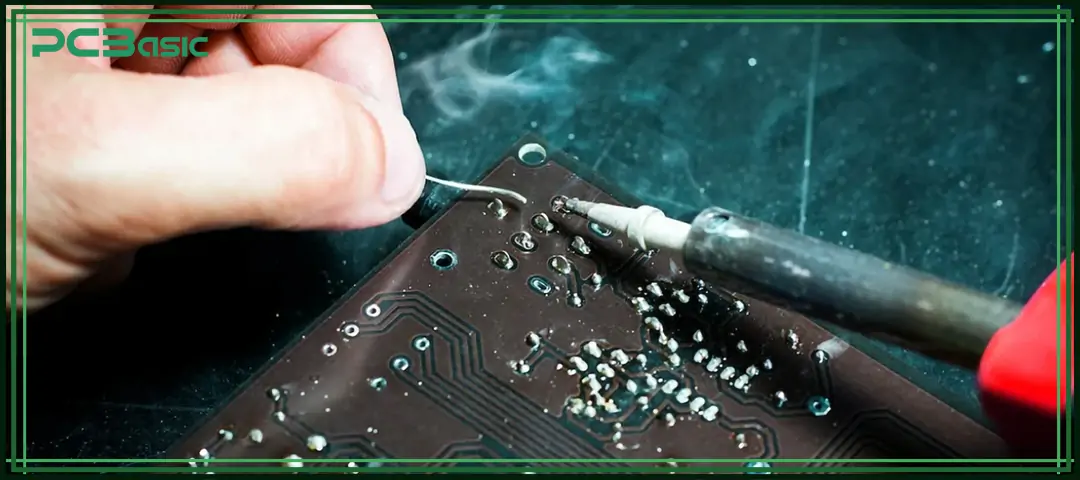

Global high-mix volume high-speed PCBA manufacturer
9:00 -18:00, Mon. - Fri. (GMT+8)
9:00 -12:00, Sat. (GMT+8)
(Except Chinese public holidays)


Global high-mix volume high-speed PCBA manufacturer
9:00 -18:00, Mon. - Fri. (GMT+8)
9:00 -12:00, Sat. (GMT+8)
(Except Chinese public holidays)
HomePage > Blog > Knowledge Base > Guide to Leaded Solder | Leaded vs. Lead-Free Solder
In the process of connecting electronic components, solder is always the key material for circuit assembly. Leaded solder has long been the mainstream choice for industrial manufacturing and DIY electronic projects due to its excellent solderability and reliability. With the increasing concern for environmental protection and health and safety, lead-free solder has gradually become popular in various electronic products. There is an increasing number of discussions within the industry about leaded vs lead-free solder.
This article will systematically introduce everything about leaded solder, including its definition, main properties, advantages, health and environmental concerns, and practical tips, and conduct a comprehensive comparison with lead-free solder, which can help readers gain a deeper understanding of the key points for choosing different types of solder.

Solder is a fusible metal alloy used to join two or more metal surfaces together. In the electronics industry, solder is used to fix components onto printed circuit boards (PCBs) while ensuring that current can pass through normally. The process of heating solder and applying it to the connection point is called soldering. Soldering is a fundamental skill that must be mastered in electronic assembly, equipment maintenance and circuit development.
In practical applications, types of solder are divided into two major categories: leaded solders and lead-free solders.
Leaded solder is typically composed of a mixture of tin (Sn) and lead (Pb), with common ratios of 60/40 and 63/37. These ratios can offer a lower melting point and good solderability.
Lead-free solder mainly consists of tin, with the addition of other metals such as silver, copper or bismuth, and does not contain intentionally added lead. Lead-free solder has more advantages in terms of environmental protection and health, but it is slightly different from leaded solder in terms of process performance.
In addition to these two major categories, solder also includes some special alloys developed for specific requirements, such as high-temperature solder suitable for high-temperature environments and low-melting-point solder that is easy to process at low temperatures. However, in most electronic manufacturing and maintenance scenarios, the most commonly used and important distinction is still between leaded solder and lead-free solder. These two types of solder each have their own characteristics. When choosing, a decision should be made based on actual needs, safety standards and personal experience.
Leaded solder is a type of solder mainly composed of tin and lead. The common ratio is 60% tin (Sn) and 40% lead (Pb), which is called Sn60Pb40. Another commonly used ratio is Sn63Pb37, which is a eutectic alloy that can melt and solidify at a relatively low and fixed temperature.
Leaded solder has been a common standard in the electronics industry for decades due to its stable performance, low cost and ease of operation. The melting point of Sn63Pb37 leaded solder is about 183°C (361°F), which is lower than that of most lead-free solders.
Leaded solder is easy to identify. Many engineers and technicians prefer it because it is easy to control and the quality of solder joints is high. Although regulations have restricted the use of leaded solder in consumer electronics, it is still widely adopted in military, aerospace and repair fields.

Leaded solder has many key properties, which is why it is widely used in electronics manufacturing and repair. These properties mainly come from its composition - tin (Sn) and lead (Pb).
Low melting point: The typical melting point of leaded solders (such as Sn63Pb37) is 183°C. This lower temperature requires less heat during soldering, making it more suitable for precision components and reducing thermal damage to sensitive parts or PCBs.
Good wettability: Lead solder has strong fluidity and can wet component leads and PCB pads very well. This enables both beginners and experienced engineers to easily create strong and reliable solder joints, while reducing problems such as cold and brittle solder joints.
Shiny and smooth solder joints: Solder joints made with leaded solder are usually very bright and smooth, and defects are easily detectable by the naked eye. The solder joints of lead-free solder are often dull or rough, while it is easier to check the soldering quality with leaded solder.
Ductility and flexibility: The cooled leaded solder is relatively soft. This enables the solder joints to better withstand mechanical stress, vibration and multiple thermal cycles, reducing the risk of cracking.
Good electrical conductivity: The resistance of lead solder joints is very low, which can ensure the stability of electrical connections in the circuit.
Low cost: Leaded solders are generally cheaper than many special types of lead-free solders, although this price advantage is not as obvious as before.

Time is money in your projects – and PCBasic gets it. PCBasic is a PCB assembly company that delivers fast, flawless results every time. Our comprehensive PCB assembly services include expert engineering support at every step, ensuring top quality in every board. As a leading PCB assembly manufacturer, we provide a one-stop solution that streamlines your supply chain. Partner with our advanced PCB prototype factory for quick turnarounds and superior results you can trust.
Although leaded solder has many advantages, it also presents obvious health and environmental risks. Lead is a toxic heavy metal that can cause nerve damage, developmental problems in children and other serious health hazards.
Many countries have issued relevant regulations, such as RoHS (Restriction of Hazardous Substances), to restrict or ban the use of leaded solder in consumer electronic products. The purpose of these regulations is to reduce lead pollution and protect human health.
When using leaded solder, lead dust and lead fumes may be ingested or inhaled. All of these will affect health. Therefore, safety should be noted during operation, including:
• Wear gloves when operating leaded solder
• Wash your hands after use
• Use fume extraction equipment or ensure good ventilation when soldering
Lead solder waste should be specially treated as a hazardous material and must not be discarded casually. Improper disposal can pollute the environment. Safe disposal methods will be introduced later.
Lead in electronic waste may seep into soil and water, causing damage to ecosystems and public health over a long period of time. This is also one of the important reasons for the controversy over leaded solder vs lead-free solder.

If you are going to use leaded solder, you must pay attention to the following safety precautions and operating methods:
Soldering Environment
When soldering, work in a well-ventilated area, preferably with fume extraction. It is recommended to use a temperature-controlled soldering iron and set the temperature to 200-250°C to ensure the solder melts smoothly.
Personal Safety
Wear disposable gloves when handling leaded solder to avoid direct skin contact. Do not eat or touch your face during soldering. Wash your hands after finishing the work.
Cleaning Up
After soldering, keep the work area clean. Dispose of solder waste according to regulations; do not throw it away casually.
Proper Storage
Store leaded solder in labeled containers, away from food and personal items. Keep it out of reach of children and pets.
Equipment Maintenance
It is recommended to use separate soldering tips for leaded solder and lead-free solder to prevent cross-contamination, especially in professional environments.
Lead-free solder is a type of solder that does not contain intentionally added lead (Pb). It is usually mainly composed of tin (Sn), and other metals such as silver (Ag), copper (Cu) or bismuth (Bi) are added. Compared with leaded solder, lead-free solder is more environmentally friendly and is often used in the manufacture of electronic products that need to comply with environmental regulations such as RoHS.

The debate between leaded vs lead-free solder is ongoing in the electronics industry. Here’s a side-by-side look at the main differences:
|
Feature |
Leaded Solder |
Lead-Free Solder |
|
Composition |
Tin + Lead |
Tin + Silver, Copper, or other metals |
|
Leaded Solder Melting Point |
~183°C (Sn63Pb37) |
217°C–227°C (varies by alloy) |
|
Workability |
Easier to use, better flow and wetting |
Harder to use, may require flux additives |
|
Joint Appearance |
Bright, shiny, smooth |
Dull, grainy, harder to inspect |
|
Health & Environment |
Hazardous due to lead |
Safer, compliant with RoHS |
|
Applications |
Aerospace, medical, repair, and some prototyping |
Mass-market electronics, RoHS-compliant |
• Where permitted by regulations, leaded solder is recommended for the maintenance of high-reliability or old equipment.
• All new consumer products, as well as occasions where compliance with environmental protection or health regulations is required, you should choose lead-free solder.
Leaded solder is still very important in the electronics industry because it is easy to operate, stable in performance and has a low melting point. But as health and environmental issues are receiving increasing attention, the use of leaded solder is decreasing, and many places are switching to lead-free solder. Understanding the differences between leaded solder and lead-free solder in terms of performance, safety, regulations, and application scenarios can help you make the right choice in soldering projects.
Nowadays, lead-free solder is used as the standard for most consumer electronics and mass production. However, lead solder is still very common in prototype development, high-reliability projects or the maintenance of old systems. No matter which solder is used, safety and environmental protection should be given due attention.
Is leaded solder still available?
Yes, leaded solder is still available, especially for industrial, aerospace, military, and certain repair applications. However, its use is increasingly regulated and restricted in consumer electronics due to environmental and health concerns.
Can I use leaded solder for DIY electronics?
You can use leaded solder for DIY electronics in most regions, provided you follow safety guidelines and local regulations. Many hobbyists prefer leaded solder for its ease of use and lower leaded solder melting point. Always handle with care and avoid exposing children or pets to leaded solder.
How do I dispose of leaded solder safely?
Dispose of leaded solder as hazardous waste, according to your local regulations. Do not throw leaded solder scraps in the regular trash. Many electronics stores or community hazardous waste centers accept used leaded solder and old soldering supplies for safe recycling or disposal.

Assembly Enquiry
Instant Quote
Phone contact

+86-755-27218592
In addition, we've prepared a Help Center. We recommend checking it before reaching out, as your question and its answer may already be clearly explained there.
Wechat Support

In addition, we've prepared a Help Center. We recommend checking it before reaching out, as your question and its answer may already be clearly explained there.
WhatsApp Support

In addition, we've prepared a Help Center. We recommend checking it before reaching out, as your question and its answer may already be clearly explained there.
